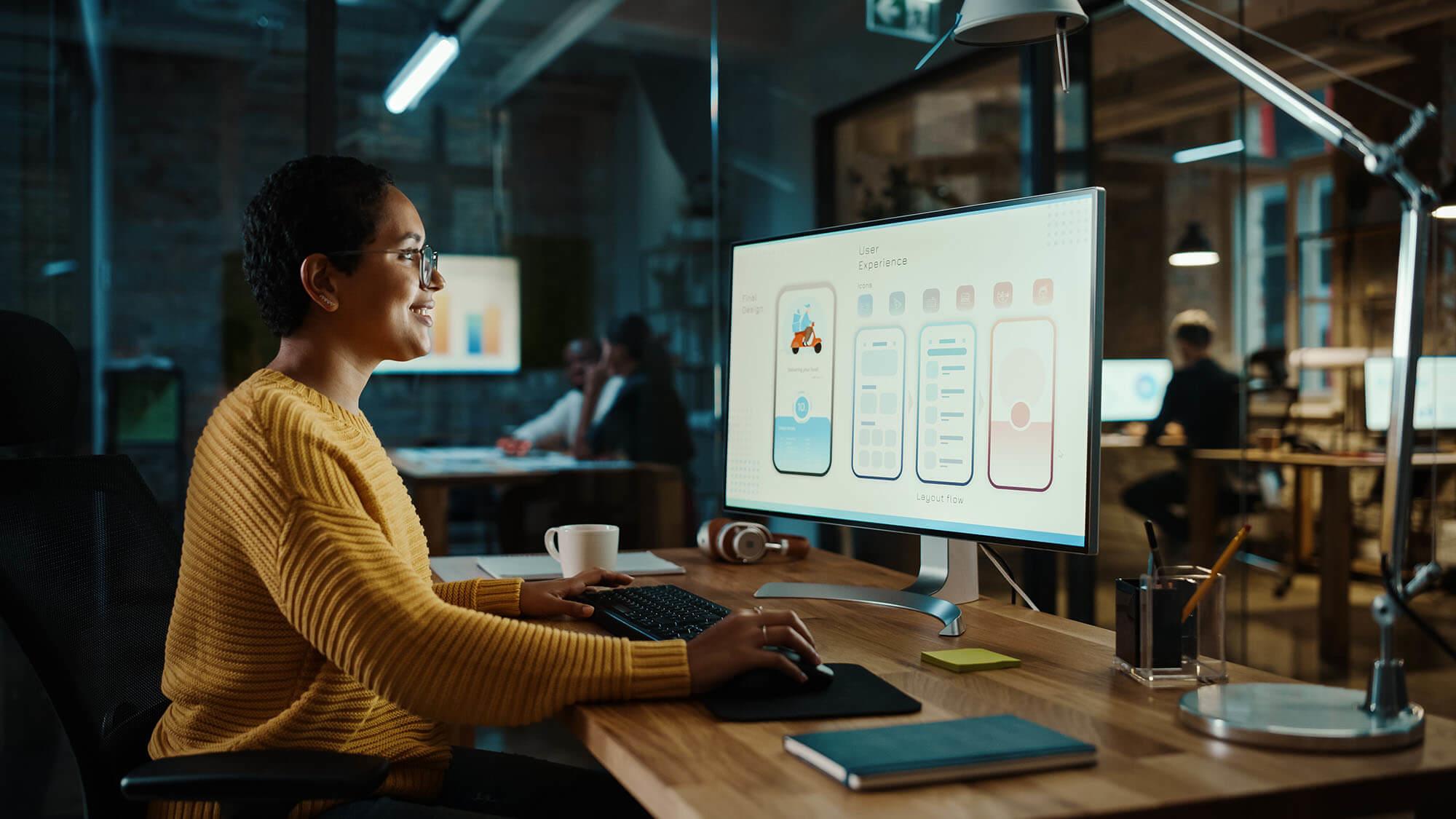Vital Concepts of User-Centric Web Style for Optimum Engagement
In the realm of web layout, user-centric concepts serve as the cornerstone for cultivating interaction and fulfillment. By prioritizing user demands, improving functionality, and guaranteeing accessibility, developers can produce experiences that resonate with diverse audiences. The trip towards optimal involvement does not end here; continuous user responses is necessary for improving these concepts.
Understanding Customer Requirements
Understanding user needs is basic to producing reliable web layouts that resonate with target market. An extensive understanding of individual requires allows developers to craft experiences that are not only practical but likewise involving. This procedure begins with thorough research study methodologies, consisting of user interviews, studies, and analytics, which aid to recognize the specific preferences, habits, and discomfort factors of the target market.
Furthermore, empathy plays a crucial role in understanding individual requirements. By tipping right into the individuals' shoes, designers can much better expect their expectations and produce customized solutions that address their worries - Web design in Penang. Structure user identities, which envelop the qualities and inspirations of regular customers, can additionally lead layout decisions and make sure placement with user priorities
On top of that, contextual questions allows designers to observe customers in real-world settings, giving insights right into just how they connect with existing systems. This qualitative information can notify design iterations that boost customer satisfaction. Inevitably, a user-centered method, grounded in a deep understanding of individual requirements, not just improves functionality however likewise promotes loyalty and count on, resulting in boosted involvement and enhanced general individual experience.
Prioritizing Usability

Furthermore, the importance of comments can not be overemphasized. Customers need to receive instant, clear feedbacks to their activities, such as form submissions or button clicks, assisting them comprehend the end results of their communications. This responses builds count on and motivates continued involvement.
Moreover, it is essential to conduct usability testing during the design process. Observing real individuals as they communicate with the site can expose discomfort points and areas for enhancement. Iterative layout based upon customer responses not just improves use but also aligns the website much more closely with user expectations. Inevitably, focusing on use promotes a user-centric technique that drives interaction and improves the overall effectiveness of the web experience.
Ensuring Accessibility

To achieve ease of access, designers ought to comply with established guidelines such as the Web Content Ease Of Access Guidelines (WCAG) These guidelines emphasize the significance of offering text choices for non-text Visit Website content, guaranteeing adequate comparison in between text and background shades, and allowing keyboard navigation for all interactive aspects (Web design in Penang). In addition, clear and succinct language needs to be made use of to help understanding
Integrating access features not just advantages individuals with impairments but additionally boosts general individual experience. For instance, display viewers can help customers in browsing content efficiently, while captions and records make multimedia easily accessible to those with hearing impairments. Moreover, an available web site can enhance search engine optimization (SEARCH ENGINE OPTIMIZATION), as internet search engine favor well-structured and straightforward sites.
Eventually, focusing on availability promotes inclusivity, allowing all users to fully involve with digital content and ensuring that no person is left in the electronic landscape.
Aesthetic and Aesthetic Design
A properly designed site not just fulfills accessibility requirements yet likewise astounds users with its visual and aesthetic elements. The visual layout of a site plays an essential duty in developing an interesting customer experience. Effective use shade, typography, and images can evoke feelings, convey brand identification, and guide customers through the content effortlessly.
Shade schemes ought to be very carefully picked to reflect the brand name's individuality while maintaining readability and visual comfort. Typography should be readable and sympathetically integrated into the overall layout, guaranteeing that it matches instead of sidetracks from the content - Web design in Penang. Photos ought to be top notch and pertinent, offering to boost the message instead than bewilder it
Whitespace is one more crucial part of visual design. It supplies breathing space, permitting customers to concentrate on crucial components without really feeling littered. In addition, uniformity click over here in visual design elements, such as buttons and symbols, cultivates knowledge and boosts navigation.
Eventually, a well-executed aesthetic and aesthetic layout not just draws in users but additionally urges expedition and interaction, leading to an extra fulfilling on-line experience. This foundation is necessary for cultivating deeper engagement and establishing an enduring connection with the target market.
Constant Individual Feedback
Customer responses acts as a critical column in the evolution of internet style, making certain that the web site remains to fulfill the requirements and assumptions of its target market. By actively obtaining opinions and understandings from individuals, designers can reveal useful details that drives renovations and cultivates involvement. This repetitive procedure not just improves customer fulfillment but likewise builds a sense of area and count on.
To properly gather constant customer comments, numerous methods can be utilized, consisting of surveys, functionality screening, and analytics tools. Surveys can give quantitative information on user preferences, while usability screening uses qualitative insights into exactly how customers communicate with the site. Additionally, analytics devices can track behavior patterns, revealing locations of rubbing that may not be right away evident.
It is important to examine and prioritize responses, resolving high-impact issues that impact individual experience. Communicating updates and adjustments made in action to customer input enhances the worth of their contributions, encouraging continuous involvement. Inevitably, a commitment to continual individual feedback not only refines website design but also cultivates a user-centric approach that can substantially improve interaction and commitment over time.
Verdict
To conclude, the crucial principles of user-centric website design encompass a thorough understanding of individual demands, a solid emphasis on functionality, and the integration of ease of access functions. Visual and visual design play an important function in improving user experience. Continuous individual feedback further educates layout enhancements, guaranteeing that sites continue to be engaging and reliable. By adhering to these concepts, developers can produce digital settings that not just meet user assumptions but additionally foster satisfaction and lasting interaction.